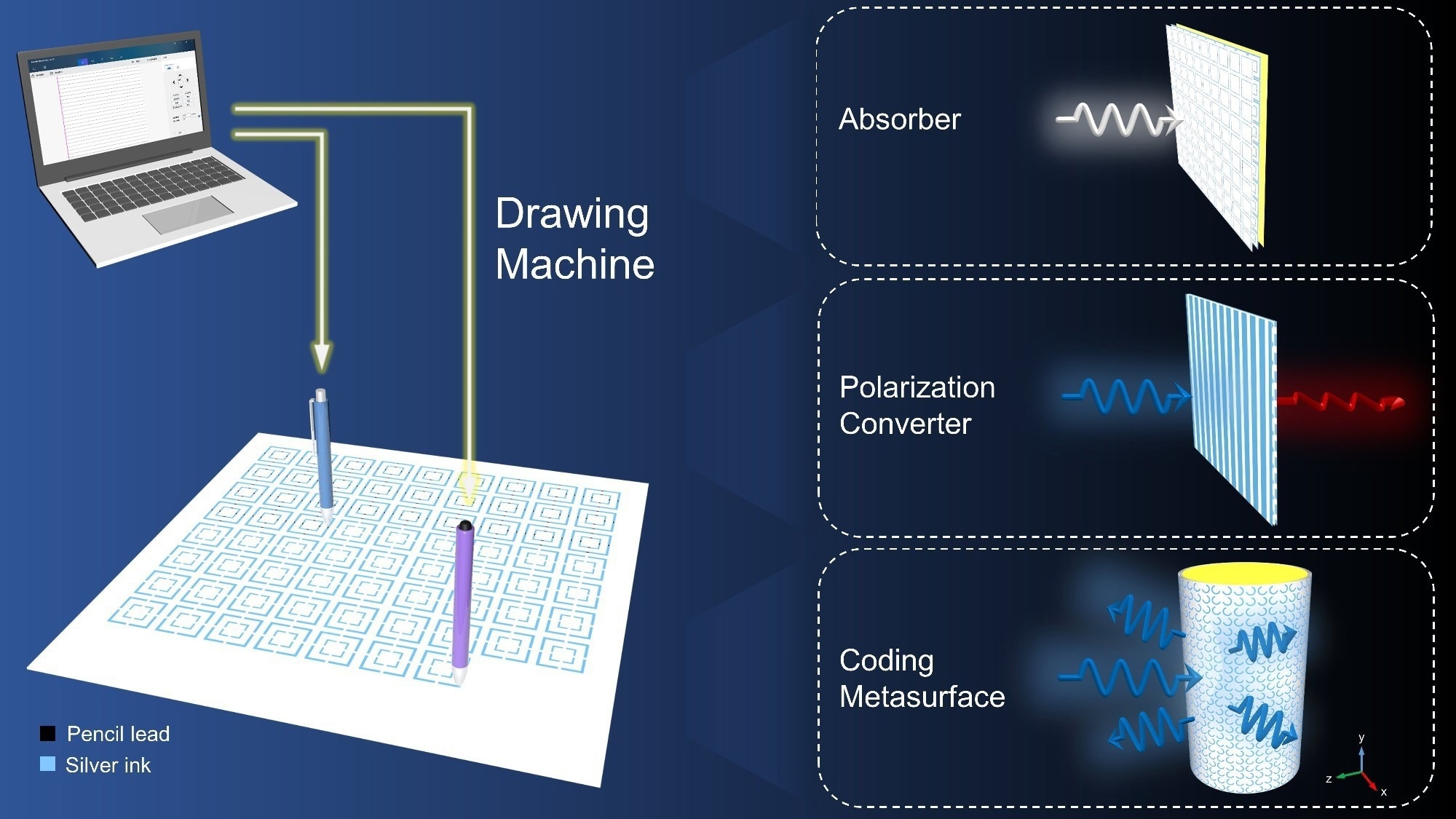The automatic drawing machine makes paper-based metamaterials
Researchers have created an automatic drawing machine that transfers metamaterials onto paper using pens and pencils. The fabrication of three metamaterials that can be used to control the microwave portion of the electromagnetic spectrum served as an example of the new methodology.
Researchers have developed a new method for drawing metamaterials on paper. They used it to make three different types of metamaterials capable of manipulating the microwave region of the electromagnetic spectrum. Image Credit: Junming Zhao, Nanjing University
Metamaterials are synthetic composite materials whose structured microstructures, rather than the chemical constituents of the materials, determine their properties.
Structures can be used to modify electromagnetic waves in ways not conceivable with ordinary materials due to their precise shape, geometry, size, orientation and arrangement.
Metamaterials, especially those used as absorbers, typically need to be thin, light, wide, and strong, but creating thin and light devices using traditional substrates is not easy. Using paper as a substrate can help meet these requirements while lending itself to surface-conforming or mechanically reconfigurable metasurfaces.
Junming Zhao, Research Team Leader, Nanjing University
The researchers explain their innovative method, which uses mechanical pencils to make resistors and resistive coatings and a ballpoint pen with conductive ink to create conductors, in the journal Express Optical Materials. They mechanized and improved this procedure by incorporating it into a computer-controlled drawing machine.
Zhao added, “Although paper-based metamaterials have already been made using inkjet printing technology, our drawing technique is less expensive, simpler and more flexible. Our method could be useful for fabricating reconfigurable metallic antennas and lenses as well as metamaterial devices that absorb incident electromagnetic energy from cell phones or other sources.”
Automated drawing
The innovative drawing device uses mechanical pencils with changing graphite contents or pens containing conductive ink.
Three stepper motors are used; two are used to move the pen or pencil in a horizontal plane, and the third is used to raise or lower the writing instrument in a vertical plane. A computer regulates the characteristics of the drawing machine, including the speed of movement.
“Some of the paper we tried was not very compatible with pencils or pens with conductive ink, resulting in poor conductivity of the designs drawn. After some testing, we found that the best performance came from using 0.22mm thick paper, which is easy to obtain and very compatible with pencils and conductive ink.“, added Zhao.
The patterns the researchers drew on paper with the conductive ink pen had a good conductivity of 3×106 Siemens per meter. To understand how drawing times, drawing pressures, and pencils with different amounts of graphite affect electrical resistance, the researchers also looked at these variables.
As a result, they could determine the prerequisites for creating patterns with particular strength.
Creation of paper metamaterials
The researchers created three distinct paper-based metamaterials: a polarization converter, an absorber, and a conformal coding metasurface using their unique drawing technique. They demonstrated that the polarization converter could rotate the polarization linearly by 90° between 3.1 and 6.6 GHz with a conversion efficiency of over 90%.
An absorber was created that weighed only 58.3 g and had 90% absorption capacity between 2.1 GHz and 10.5 GHz.
A conformal coding metasurface was also developed for radar cross-section reduction, a technique for concealing the radar signal in ships and aircraft used by the military.
This metasurface contained two structural units 180° apart in reflection phase, allowing them to serve as the ‘0’ and ‘1’ elements for 1-bit encoding. When twisted around a curved surface, the metasurface reduced the radar cross section by 10 dB for the frequency range 8.94–11.59 GHz.
We hope that in the future, we can use design technology to design and manufacture meta-devices that could be worn or applied to the skin to achieve electromagnetic shielding and other functions. We also plan to design mechanically reconfigurable metamaterials that take advantage of the fact that paper can be bent and bent.
Junming Zhao, Research Team Leader, Nanjing University
Journal reference:
Zhu, K. et al. (2022) Direct drawing of metamaterials on paper using an automatic drawing machine. Express Optical Materials. doi:10.1364/OME.472866.
Source: https://www.optica.org/en-us/home/


Comments are closed.